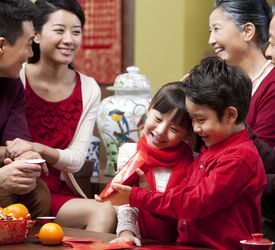Today is the festival that celebrates the beginning of a new year on the traditional Lunar Chinese calendar—the Year of the Dragon. It is the fifth in the twelve-year periodic cycle of animals that appear in the Chinese zodiac. The Dragon is considered a favorable Terrestrial Sign. There are typically marked spikes in the birth rates of countries that use the Chinese zodiac or places with substantial overseas Chinese populations during the year of the Dragon, because such Dragon babies are considered to be lucky and have desirable characteristics that supposedly lead to better life outcomes.
In China, the festival is commonly referred to as the Spring Festival since the spring season in their lunisolar calendar traditionally starts with Lichun, the first of the twenty-four solar terms which the festival celebrates around the time of the New Year. It marks the end of Winter and the beginning of the spring season. Observances traditionally take place from New Year’s Eve, the evening preceding the first day of the year to the Lantern Festival, held on the 15th day of the year. The first day of begins on the new moon that appears between 21 January and 20 February on the Western Gregorian Calendar.
Dragon dancers in China.New Year is one of the most important holidays in Chinese culture and has strongly influenced Lunar New Year celebrations of its 56 ethnic groups. It is also celebrated worldwide in regions and countries that are home to significant overseas Chinese or Sinophone populations, especially in Southeast Asia. These include Brunei, Cambodia, Indonesia, Malaysia, Myanmar, the Philippines, Singapore, Thailand, and Vietnam. It is also prominent beyond Asia, especially in Australia, Canada, New Zealand, Peru, South Africa, the United Kingdom, and the United States, as well as various European countries.
Hanging red paper lanterns is also traditional.The Lunar New Year is associated with several myths and customs. The festival was traditionally a time to honor deities and ancestors. Within China, regional customs and traditions vary widely and the evening preceding the New Year’s Day is regarded as an occasion for Chinese families to gather for an annual reunion dinner. Families thoroughly clean their homes, in order to sweep away any ill fortune and to make way for incoming good luck. Another custom is the decoration of windows and doors with red paper cutouts and couplets. Popular themes among these papercuts and couplets include good fortune or happiness, wealth, and longevity. Other activities include lighting firecrackers and giving money in red envelopes.
A Chinese-American family celebrates with gifts of money in red envelopes.Chinese New Year is observed as a public holiday in some countries and territories where there is a sizable Chinese population. Since the New Year falls on different dates on the Gregorian calendar every year and on different days of the week, some of these governments opt to shift working days to accommodate a longer public holiday. In some countries, a statutory holiday is added on the following workday if the New Year falls on a weekend as is the case this year 2024. Depending on the country, the holiday may be termed differently and different animals replace the Dragon.




No comments:
Post a Comment